How to Read a Meter for Electricity and Natural Gas
You probably don’t think about your electricity and natural gas meters too often. They’re usually tucked away out of sight, unnoticed by everyone except the occasional utility worker. But if you ever want to check your up-to-the-minute energy consumption, you’ll need to know where to find these meters and how to read them.
Finding Your Electricity and Natural Gas Meters
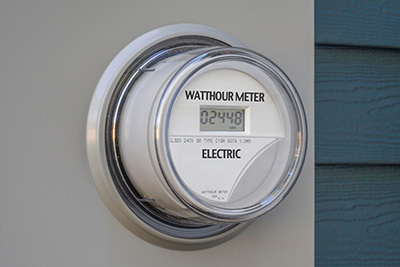
The exact location of these meters can vary from one home to the next. Electricity meters are often installed on a home’s exterior wall, near where the power line connects to the home. But in some cases, the meter may be located in an enclosed porch, garage, basement, laundry room or attic. In multi-unit buildings, meters may be located in a boiler room or other space that services the entire building.
Natural gas meters are usually installed close to the ground, since natural gas lines are buried. They are also typically installed next to an interior wall, but in some instances may be indoors or in common areas of multi-unit buildings.
If you’re renting your home and are unable to find your electricity or gas meter, ask your landlord for help. If you’re a homeowner, you should ask your local utility.
How to Read the Electricity Meter
Electricity is measured in watts, and the amount of electricity it takes to sustain 1,000 watts for one hour is called a kilowatt-hour, or kWh. Your electricity provider bills you in kWh, and that’s the same unit of measurement tracked by your electricity meter.
Traditional Electricity Meter Reading
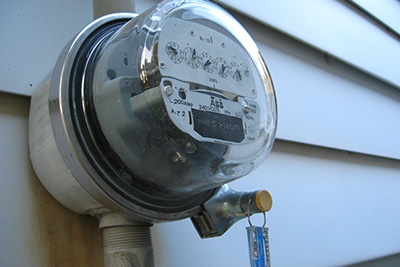
On a traditional electricity meter, kWh is displayed on a series of dials that must be read from right to left. The dials are numbered from 0 to 9, and some dials turn clockwise while others turn counterclockwise.
When the needle of a dial is between two numbers, the correct number is the lower of the two. The exception is when the needle is between zero and nine, you should read it as nine. When the needle is directly on a number, check the next dial to the right. If the needle on that dial has not yet reached zero, the actual reading of the dial to its left is one digit lower than the number indicated by the needle.
It’s important to note that the electricity meter reading does not reflect your monthly consumption. It’s a running total of electricity use, and when electric utilities read your meter, they subtract the previous month’s reading from the latest reading to calculate your electricity use for that month.
How to Read a Digital Electric Meter - or Smart Meter
Traditional electricity and natural gas meters have been in place for decades, but their major limitation is that they have to be read each month in person by a utility employee. To become more efficient, electric and natural gas utilities are gradually upgrading their metering infrastructure with smart meters, which can communicate energy data to the utilities wirelessly and in real time. Smart meters can also be used to remotely connect and disconnect service, which usually requires a visit from a utility technician in most other situations.
If you have a smart meter, your consumption data will appear on an easy-to-read digital display. In most cases, this will still appear as a running total, not the consumption for the current billing cycle.
Most of the time, you can continue to ignore your electricity and gas meters as they silently track your energy consumption. But if you ever want to double-check your reading, verify whether your home is using energy or simply see your meter in action, step outside and get a good look for yourself.
How to Read the Gas Meter
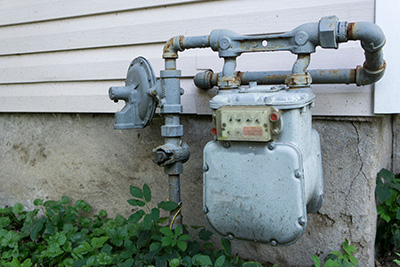
Natural gas is usually measured in cubic feet, and your natural gas meter may display your consumption by the thousands of cubic feet (MCF) or hundreds of cubic feet (CCF). Some utilities measure natural gas in therms, with one therm being roughly equal to one CCF.
Just like traditional electricity meters, natural gas meters display the reading across a series of dials. There is one major difference, however: natural gas meter dials should be read from left to right.
Follow the same rules as you would for reading your electricity meter; choose the lower number when the needle is between two numbers, unless it’s between zero and nine. When the needle is directly on a number, check the dial to the right to see whether the actual reading is the number under the needle or one digit lower.
Again, as with electricity meters, the gas meter reading is a running total that the utility tracks month-to-month to calculate your bill.
Looking for Something Specific?
Select a category to find resources for topics that interest you.
Select Category

Related Articles:

How to Read Your Energy Bill
When’s the last time you really looked at your energy bill? If you ever want to know exactly where your money is going – or if you might be able to save on energy costs – you should spend a few minutes taking a deep dive into your latest energy bills.
Read Article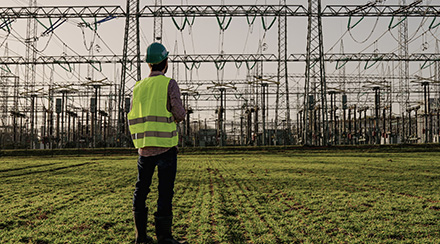
What’s the Difference Between Utilities and Suppliers?
In a competitive energy market, suppliers can compete with each other and often the utility for customers. Learn the differences between utilities and suppliers and the parts that both play in getting energy to your home.
Read Article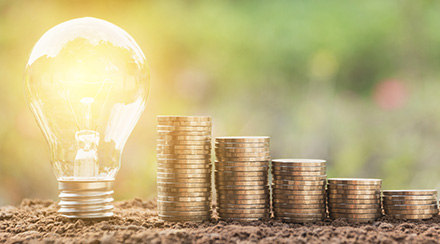
What Are the Benefits of a Retail Energy Supplier?
If you live in a state with a competitive energy market, you probably have your choice of several suppliers that are competing to win your business. Learn why signing up with one of these suppliers could benefit you.
Read ArticleMost Popular Articles

Energy Plans to Fit Your Lifestyle
NRG offers electricity and natural gas plans with perks like cash back, travel rewards and more, so you can find a plan that fits your home and family.
How to Read a Meter for Electricity and Natural Gas
You probably don’t think about your electricity and natural gas meters too often. They’re usually tucked away out of sight, unnoticed by everyone except the occasional utility worker. But if you ever want to check your up-to-the-minute energy consumption, you’ll need to know where to find these meters and how to read them.
Finding Your Electricity and Natural Gas Meters
The exact location of these meters can vary from one home to the next. Electricity meters are often installed on a home’s exterior wall, near where the power line connects to the home. But in some cases, the meter may be located in an enclosed porch, garage, basement, laundry room or attic. In multi-unit buildings, meters may be located in a boiler room or other space that services the entire building.
Natural gas meters are usually installed close to the ground, since natural gas lines are buried. They are also typically installed next to an interior wall, but in some instances may be indoors or in common areas of multi-unit buildings.
If you’re renting your home and are unable to find your electricity or gas meter, ask your landlord for help. If you’re a homeowner, you should ask your local utility.
How to Read the Electricity Meter
Electricity is measured in watts, and the amount of electricity it takes to sustain 1,000 watts for one hour is called a kilowatt-hour, or kWh. Your electricity provider bills you in kWh, and that’s the same unit of measurement tracked by your electricity meter.
Traditional Electricity Meter Reading
On a traditional electricity meter, kWh is displayed on a series of dials that must be read from right to left. The dials are numbered from 0 to 9, and some dials turn clockwise while others turn counterclockwise.
When the needle of a dial is between two numbers, the correct number is the lower of the two. The exception is when the needle is between zero and nine, you should read it as nine. When the needle is directly on a number, check the next dial to the right. If the needle on that dial has not yet reached zero, the actual reading of the dial to its left is one digit lower than the number indicated by the needle.
It’s important to note that the electricity meter reading does not reflect your monthly consumption. It’s a running total of electricity use, and when electric utilities read your meter, they subtract the previous month’s reading from the latest reading to calculate your electricity use for that month.
How to Read a Digital Electric Meter - or Smart Meter
Traditional electricity and natural gas meters have been in place for decades, but their major limitation is that they have to be read each month in person by a utility employee. To become more efficient, electric and natural gas utilities are gradually upgrading their metering infrastructure with smart meters, which can communicate energy data to the utilities wirelessly and in real time. Smart meters can also be used to remotely connect and disconnect service, which usually requires a visit from a utility technician in most other situations.
If you have a smart meter, your consumption data will appear on an easy-to-read digital display. In most cases, this will still appear as a running total, not the consumption for the current billing cycle.
Most of the time, you can continue to ignore your electricity and gas meters as they silently track your energy consumption. But if you ever want to double-check your reading, verify whether your home is using energy or simply see your meter in action, step outside and get a good look for yourself.
How to Read the Gas Meter
Natural gas is usually measured in cubic feet, and your natural gas meter may display your consumption by the thousands of cubic feet (MCF) or hundreds of cubic feet (CCF). Some utilities measure natural gas in therms, with one therm being roughly equal to one CCF.
Just like traditional electricity meters, natural gas meters display the reading across a series of dials. There is one major difference, however: natural gas meter dials should be read from left to right.
Follow the same rules as you would for reading your electricity meter; choose the lower number when the needle is between two numbers, unless it’s between zero and nine. When the needle is directly on a number, check the dial to the right to see whether the actual reading is the number under the needle or one digit lower.
Again, as with electricity meters, the gas meter reading is a running total that the utility tracks month-to-month to calculate your bill.
Looking for Something Specific?
Select a category to find resources for topics that interest you.
Select Category

Related Articles:

How to Read Your Energy Bill
When’s the last time you really looked at your energy bill? If you ever want to know exactly where your money is going – or if you might be able to save on energy costs – you should spend a few minutes taking a deep dive into your latest energy bills.
Read Article
What’s the Difference Between Utilities and Suppliers?
In a competitive energy market, suppliers can compete with each other and often the utility for customers. Learn the differences between utilities and suppliers and the parts that both play in getting energy to your home.
Read Article
What Are the Benefits of a Retail Energy Supplier?
If you live in a state with a competitive energy market, you probably have your choice of several suppliers that are competing to win your business. Learn why signing up with one of these suppliers could benefit you.
Read ArticleMost Popular Articles

Energy Plans to Fit Your Lifestyle
NRG offers electricity and natural gas plans with perks like cash back, travel rewards and more, so you can find a plan that fits your home and family.







